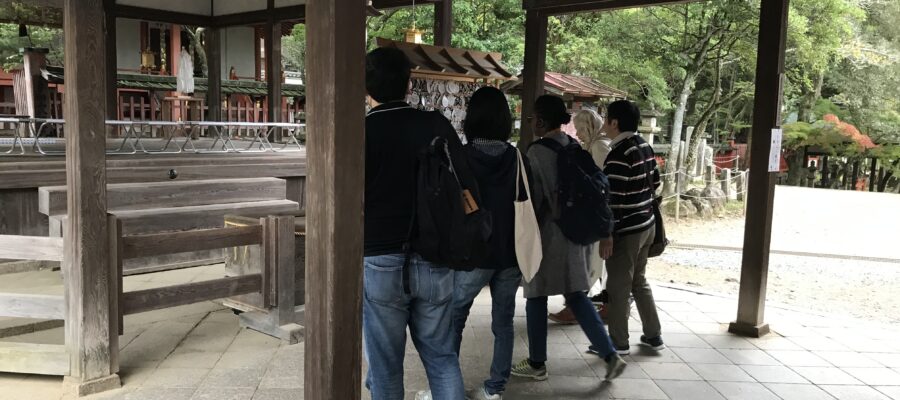大仏を見物したら東へまっすぐ
奈良の東大寺で大仏を見た後、大仏殿の回廊から出た前の道を東に真っすぐ進むと、途中、右側に、かつて7重の塔が建っていた敷地があります。そこを通り越して更に坂道を上がっていくと、正面に田向山八幡宮が現れます。
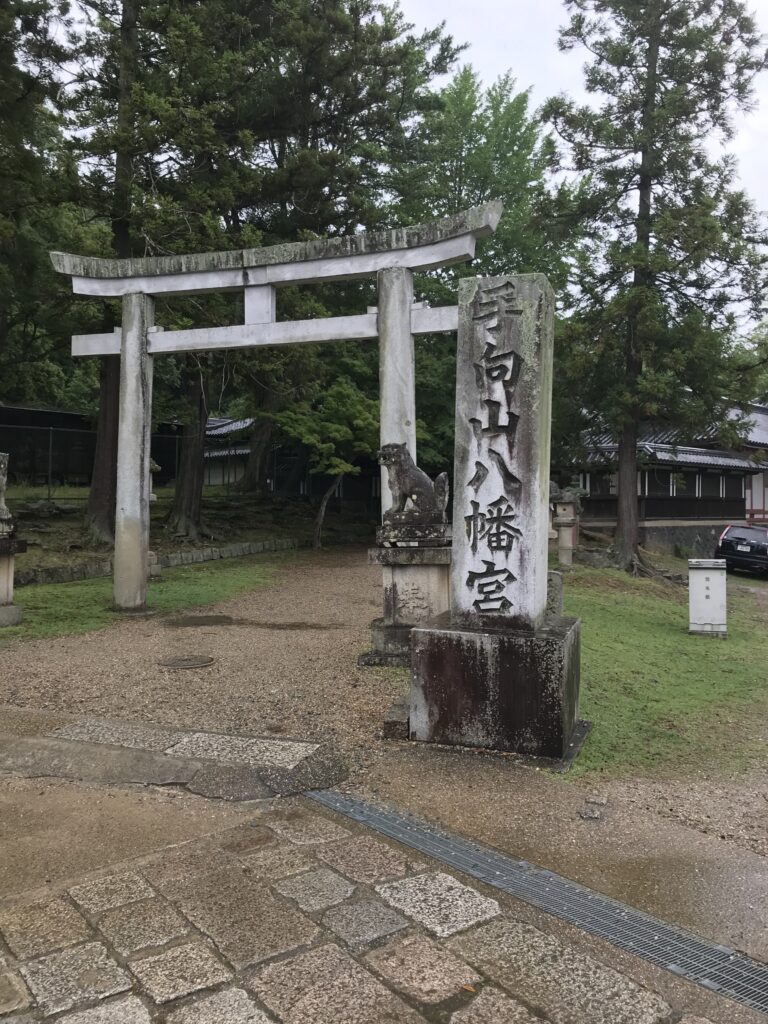
この神社は、東大寺大仏殿建立の際、その守護神として宇佐神宮の第一の御分霊をお祀りした神社です。春日大社から大仏殿に向かう時にも、この神社の中を抜けて、二月堂や法華堂を見学して、大鐘楼を見るルートを使っていました。今回は、田向山八幡宮そのものに海外からの研修生をお連れして、御案内しました。
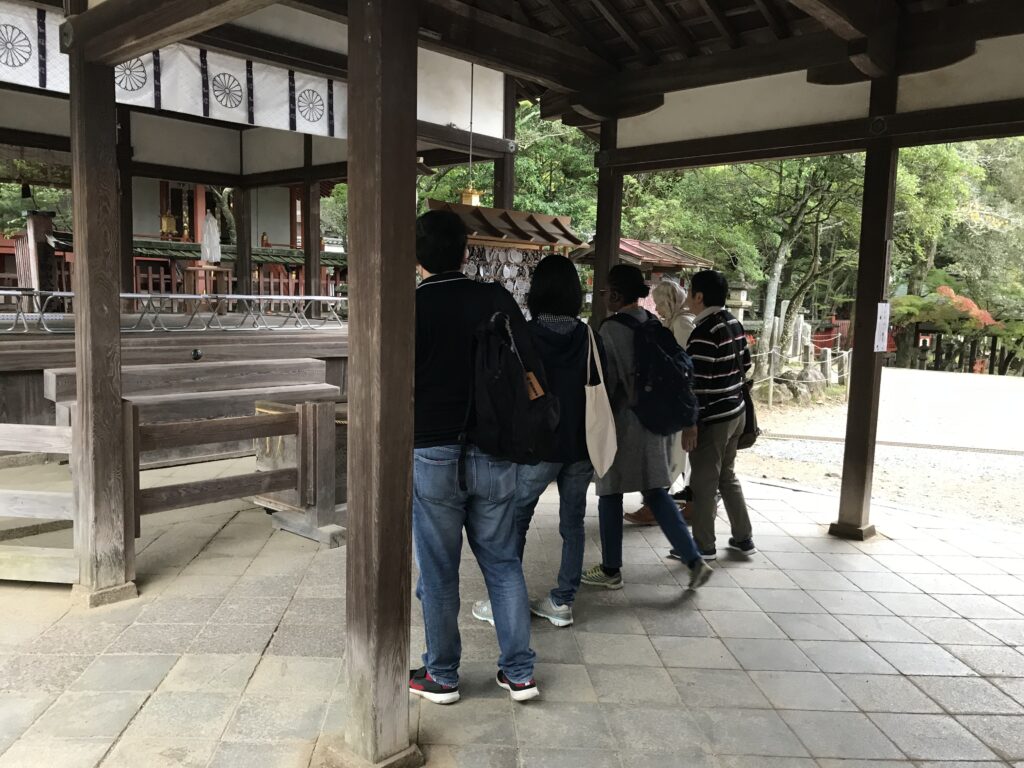
ハトでハートをつくる図案
ご存知のように八幡様のお使いはハトです。そのハトをモチーフに、ハトが向かい合う手向山八幡宮御紋が境内の石灯籠にも記されています。2羽のハトの嘴と首の部分で、ハートを作っています。ハトでハートを作るという、日本語でしかわからない言葉遊びを海外の方に説明するのは難しいので、パスしました。
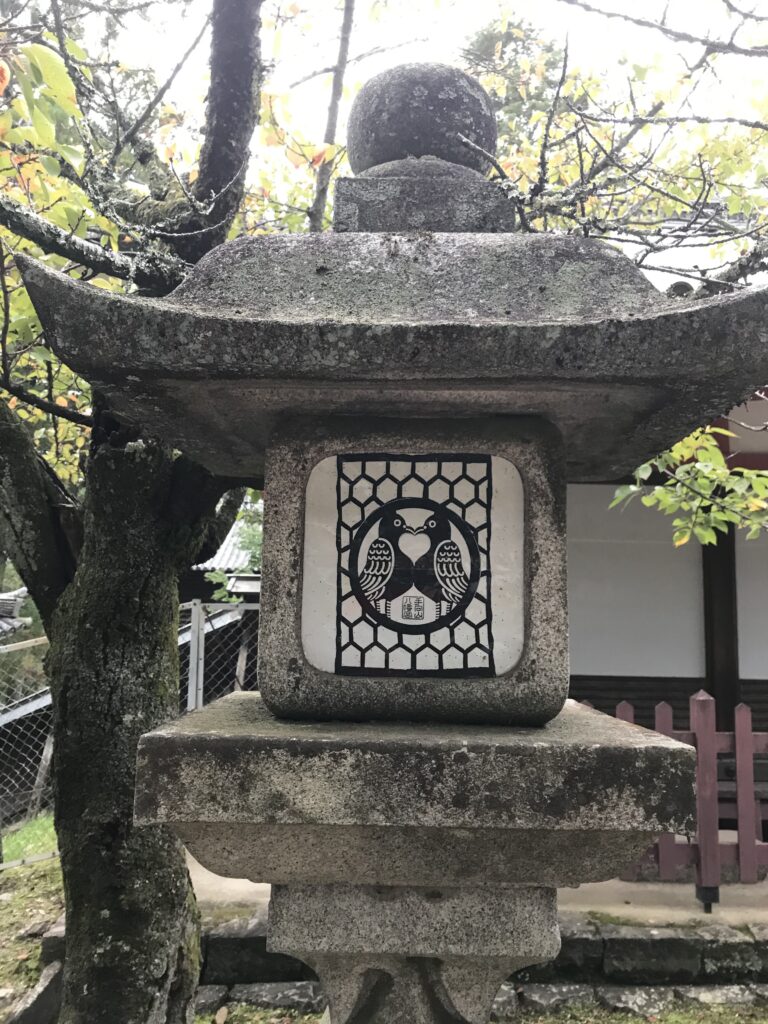
百人一首の菅原道真の歌は天満宮ではなく八幡宮
この神社は百人一首にも登場します。詠み手は菅原道真です。「このたびは 幣もとりあえず手向け山 紅葉のにしき 神のまにまに」と詠われていて、今も紅葉の名所として人々に親しまれています。
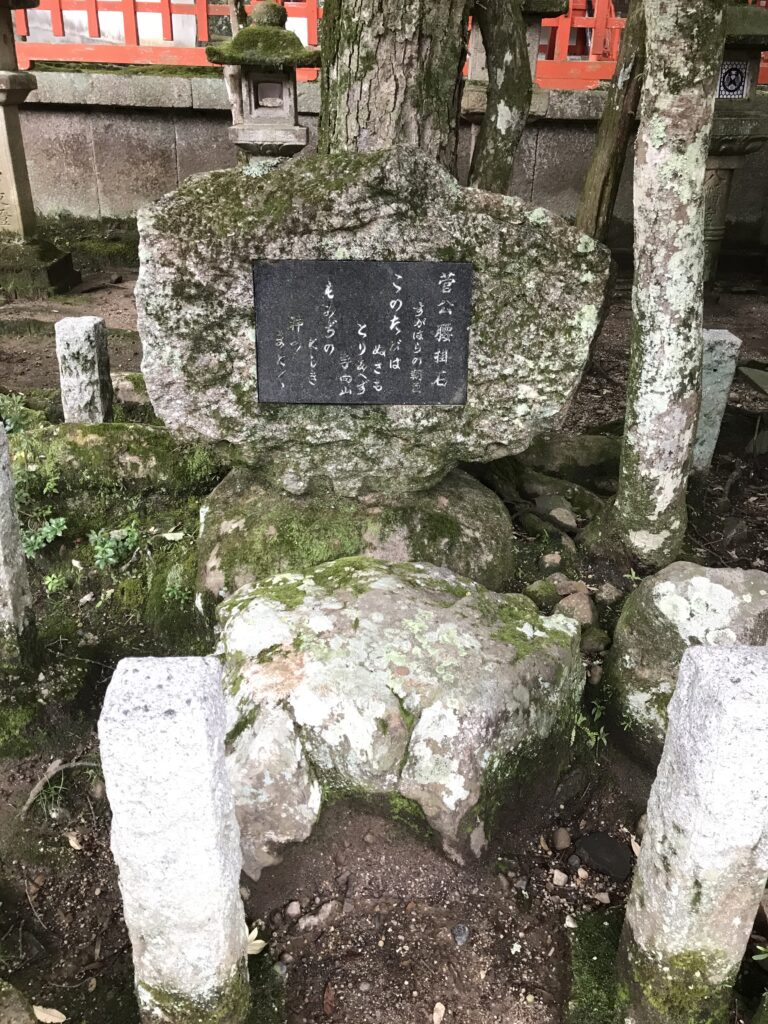
この神社も、平重衡による南都焼討で焼失しています。しかし、鎌倉時代になって現在の位置に再建されたと言われています。ガイドの皆さんも春日大社と東大寺の間を行き来する際に、この神社の存在を知らずに通り過ぎているかもしれません。次回、機会がありましたら、境内をご覧ください。(完)
手向山八幡宮の御朱印
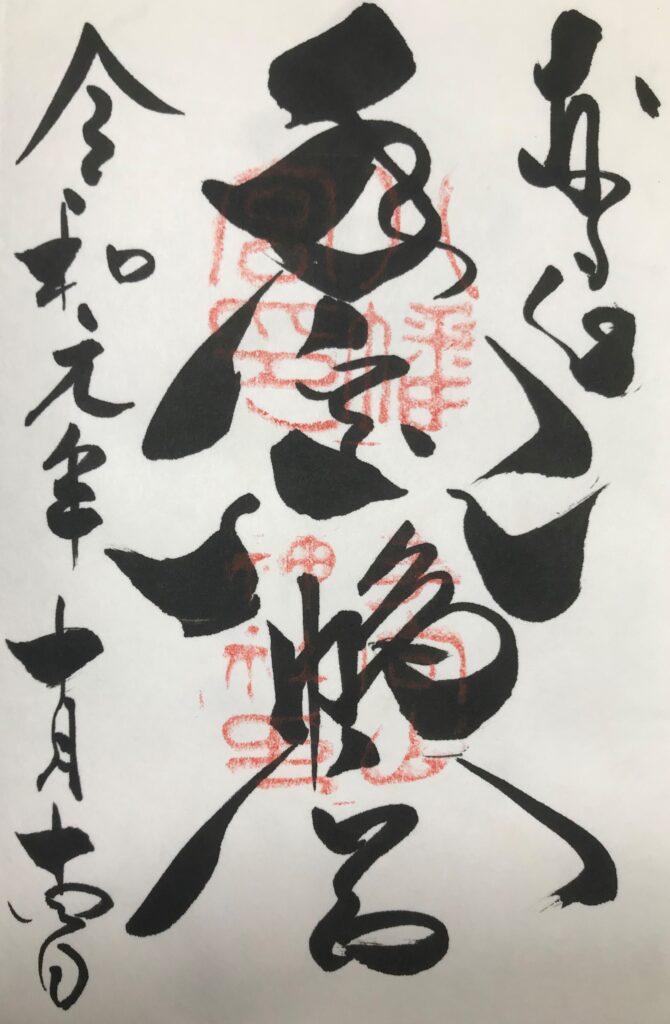
奈良のお土産
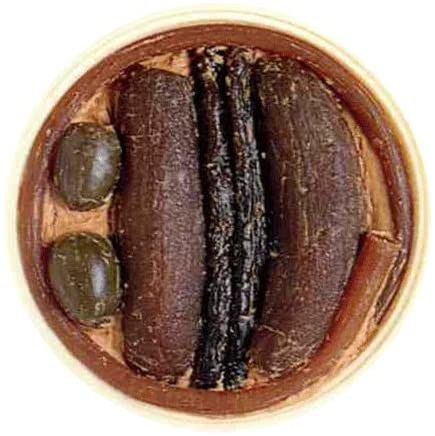
樽出し奈良漬け詰合せ N-80 (大森屋 漬物) お中元 お歳暮 ギフト
新品価格
¥8,640から
(2022/4/30 16:29時点)
Tamukeyama Hachimangu Shrine (Nara)
After seeing the Big Buddha, go straight to the east.
After viewing the Great Buddha at Todaiji Temple in Nara, walk straight east along the road in front of the Daibutsuden corridor, and on the way, on the right side, you will see the site where the seven-story pagoda once stood. Passing through there and further up the slope, you will see Tamukeyama Hachimangu Shrine in front of you.
This shrine enshrined the first spirit of the Usa Jingu Shrine as its guardian deity when the Great Buddha Hall of Todaiji Temple was built. When I went to the Great Buddha Hall from Kasuga Taisha Shrine, I also used the route through this shrine to visit Nigatsudo Hall and Hokkedo Hall and see the Great Bell Tower. This time, I took the trainees from overseas to Tamukeyama Hachimangu Shrine itself and showed them around.
Schematic of making a heart with pigeons
As you know, Hachiman-sama’s messenger is a pigeon. The crest of Tamukeyama Hachimangu Shrine, with pigeons facing each other, is also inscribed on a stone lantern in the shrine’s precincts, forming a heart with the beaks and necks of two pigeons. It is difficult to explain to a foreigner how to make a heart out of pigeons, a play on words that is only understood in Japanese, so I passed on it.
Sugawara Michizane’s poem in the Hyakunin Isshu is not from Tenmangu Shrine but from Hachimangu Shrine
This shrine also appears in the Hyakunin Isshu (100 poems). The poet is Michizane Sugawara. The poem is still popular among people as a place famous for its autumn foliage.
This shrine was also destroyed by fire during the burning of the southern capital by Taira no Shigehira. However, it is said to have been rebuilt in its present location in the Kamakura period (1185-1333). You may have passed by this shrine when coming and going between Kasuga Taisha Shrine and Todaiji Temple without knowing its existence. Next time you have a chance, please visit the precincts of the shrine. (End)
Sanctuaire Tamukeyama Hachimangu (Nara)
Après avoir vu le Grand Bouddha, allez tout droit vers l’est.
Après avoir vu le Grand Bouddha au temple Todaiji à Nara, marchez tout droit vers l’est le long de la route en face du couloir Daibutsuden, et en chemin, sur le côté droit, vous verrez l’emplacement où se trouvait autrefois la pagode à sept étages. En passant par là et en remontant la pente, vous verrez le sanctuaire Tamukeyama Hachimangu en face de vous.
Ce sanctuaire a consacré le premier esprit du sanctuaire Usa Jingu comme divinité tutélaire lors de la construction de la salle du Grand Bouddha du temple Todaiji. Lorsque je me suis rendu à la salle du Grand Bouddha depuis le sanctuaire Kasuga Taisha, j’ai également emprunté la route qui traverse ce sanctuaire pour visiter les salles Nigatsudo et Hokkedo et voir le Grand Clocher. Cette fois-ci, j’ai emmené les stagiaires étrangers au sanctuaire Tamukeyama Hachimangu et leur ai fait visiter les lieux.
Schéma de la fabrication d’un cœur avec des pigeons
Comme vous le savez, le messager de Hachiman-sama est un pigeon. Le blason du sanctuaire Tamukeyama Hachimangu, avec des pigeons se faisant face, est également inscrit sur une lanterne en pierre dans l’enceinte du sanctuaire, formant un cœur avec les becs et les cous de deux pigeons. Il est difficile d’expliquer à un étranger comment faire un cœur avec des pigeons, un jeu de mots qui n’est compris qu’en japonais, alors j’ai laissé tomber.
Le poème de Sugawara Michizane dans le Hyakunin Isshu ne provient pas du sanctuaire Tenmangu mais du sanctuaire Hachimangu.
Ce sanctuaire apparaît également dans le Hyakunin Isshu (100 poèmes). Le poète est Michizane Sugawara. Le poème est toujours populaire parmi les gens comme un endroit célèbre pour son feuillage d’automne.
Ce sanctuaire a également été détruit par le feu lors de l’incendie de la capitale sud par Taira no Shigehira. Cependant, il aurait été reconstruit à son emplacement actuel au cours de la période Kamakura (1185-1333). Il se peut que vous soyez passé devant ce sanctuaire lors de vos allers-retours entre le sanctuaire Kasuga Taisha et le temple Todaiji sans connaître son existence. La prochaine fois que vous en aurez l’occasion, visitez l’enceinte du sanctuaire. (Fin)
